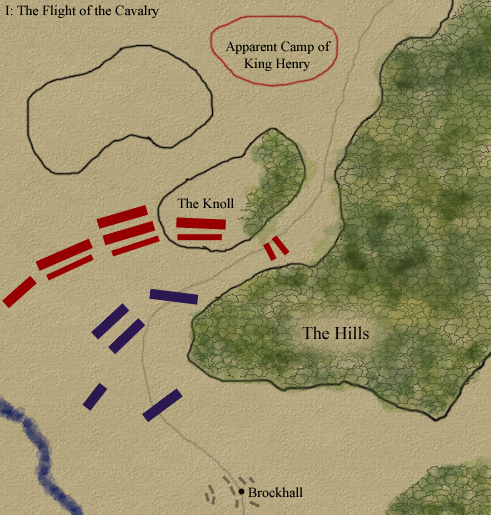Part IX: Hamelina
Richard was kept in England for four years. Perhaps bored with his time spent in the keeping of the Earl of Northampton, Richard escaped back to Aquitaine. Over the course of a year he swayed the barons of the land to his cause. After reclaiming most of his former jurisdiction, he began assembling an army. On the 19th of August, 1194, the Seven Year Revolt officially began with the sack of the royal palace in Tours.
It was a year earlier, however, that Richard began contacting the Duke of Norfolk. He was still at that time confined to the shadows, unable to come out into the open. In his one letter to the Duke, he gave his condolences for the insults received at the September Fair. In addition, he offered him his former horse, still kept at Northampton.
“If you can tame her, then consider us friends,” the letter said.
“Hamelina,” as Richard supposedly called it, was certainly a wild beast of riding horse.
With neither apprehension nor excitement, Roger took the horse into his keeping, but he did not try and tame it. Instead it languished in his stables for several weeks.
Roger stared at the horse one morning. It represented—he figured—everything he wanted. He did not feel as though he wanted to join the Revolt (which at that time was still puny, a distant event in the minds of the future rebels), but felt that he might as well. Henry deserved it.
Roger took off his crown and felt the inscriptions.
“So, my lord,” Edward said, having just woken up. Edward liked to feed the horses in the morning, and so stumbled across the Duke by accident. “What shall you do?”
A great while passed and finally Roger put the crown back on his head.
He walked into the stables and laid a hand on the silky brown neck of Hamelina. She neighed in a manner that suggested: “Oh great, here we go.”
It was a long morning. Roger broke his right foot in the struggle and though Hamelina eventually warmed to him, he was left lame for life. Perhaps it was a fair and strangely mythical toll to sacrifice his own legs, for there was no faster or braver steed in England.
Roger had signed himself to whatever revolt Richard had in mind, and it is thought that Richard set his plans in motion upon hearing the tale.
It was a year earlier, however, that Richard began contacting the Duke of Norfolk. He was still at that time confined to the shadows, unable to come out into the open. In his one letter to the Duke, he gave his condolences for the insults received at the September Fair. In addition, he offered him his former horse, still kept at Northampton.
“If you can tame her, then consider us friends,” the letter said.
“Hamelina,” as Richard supposedly called it, was certainly a wild beast of riding horse.
With neither apprehension nor excitement, Roger took the horse into his keeping, but he did not try and tame it. Instead it languished in his stables for several weeks.
Roger stared at the horse one morning. It represented—he figured—everything he wanted. He did not feel as though he wanted to join the Revolt (which at that time was still puny, a distant event in the minds of the future rebels), but felt that he might as well. Henry deserved it.
Roger took off his crown and felt the inscriptions.
“So, my lord,” Edward said, having just woken up. Edward liked to feed the horses in the morning, and so stumbled across the Duke by accident. “What shall you do?”
A great while passed and finally Roger put the crown back on his head.
He walked into the stables and laid a hand on the silky brown neck of Hamelina. She neighed in a manner that suggested: “Oh great, here we go.”
It was a long morning. Roger broke his right foot in the struggle and though Hamelina eventually warmed to him, he was left lame for life. Perhaps it was a fair and strangely mythical toll to sacrifice his own legs, for there was no faster or braver steed in England.
Roger had signed himself to whatever revolt Richard had in mind, and it is thought that Richard set his plans in motion upon hearing the tale.



